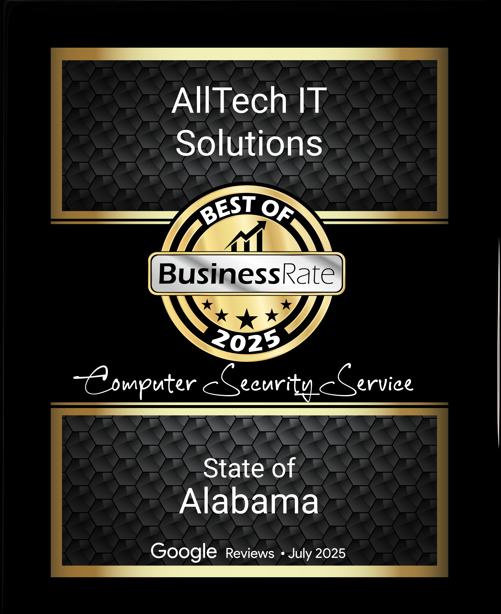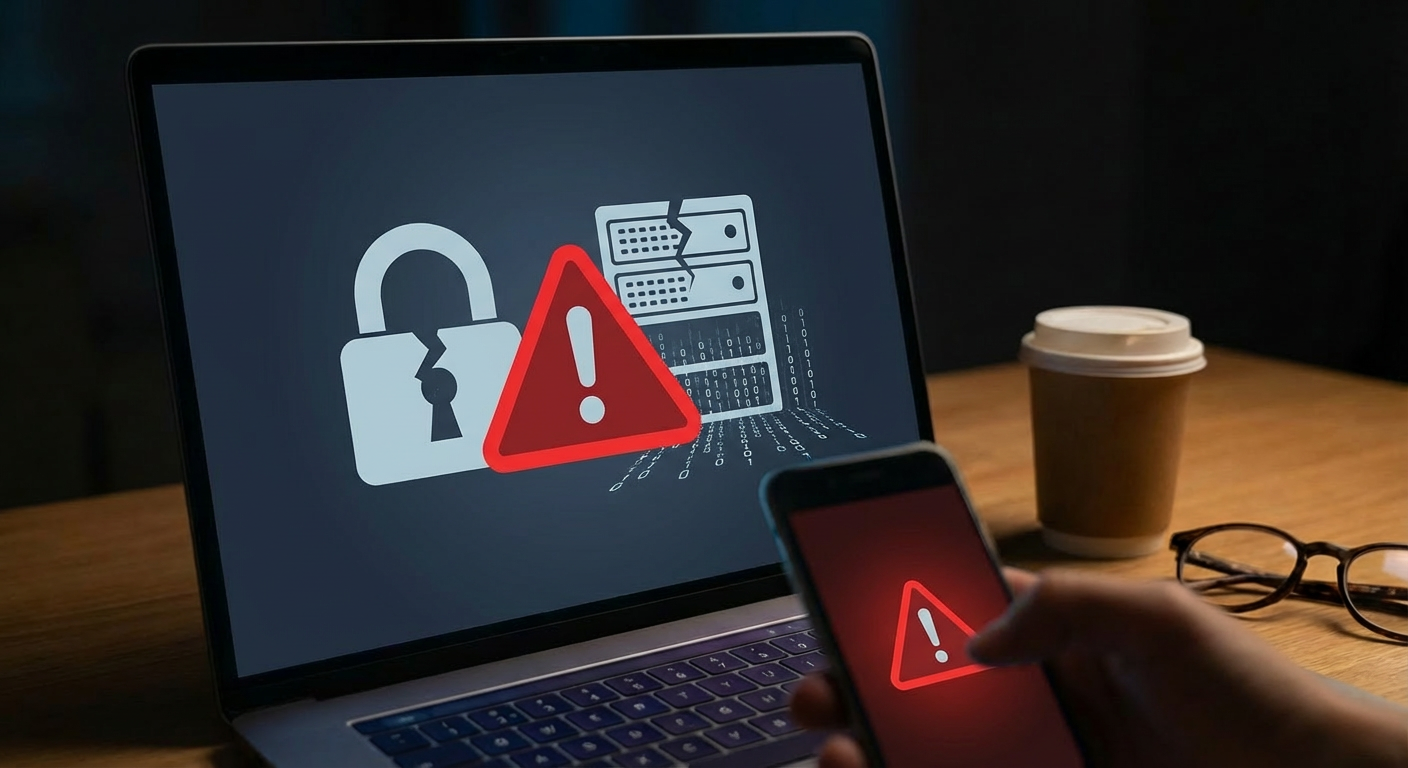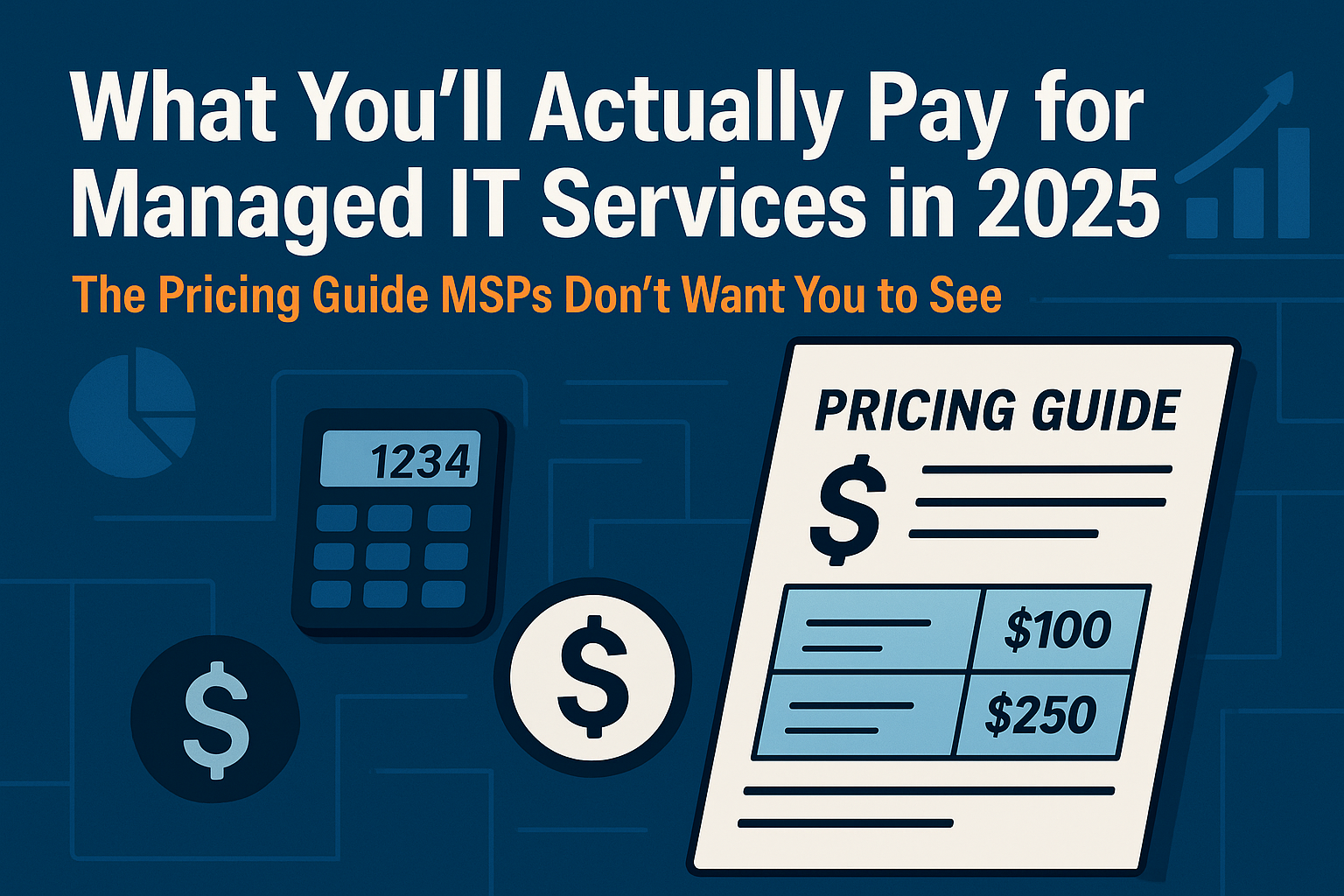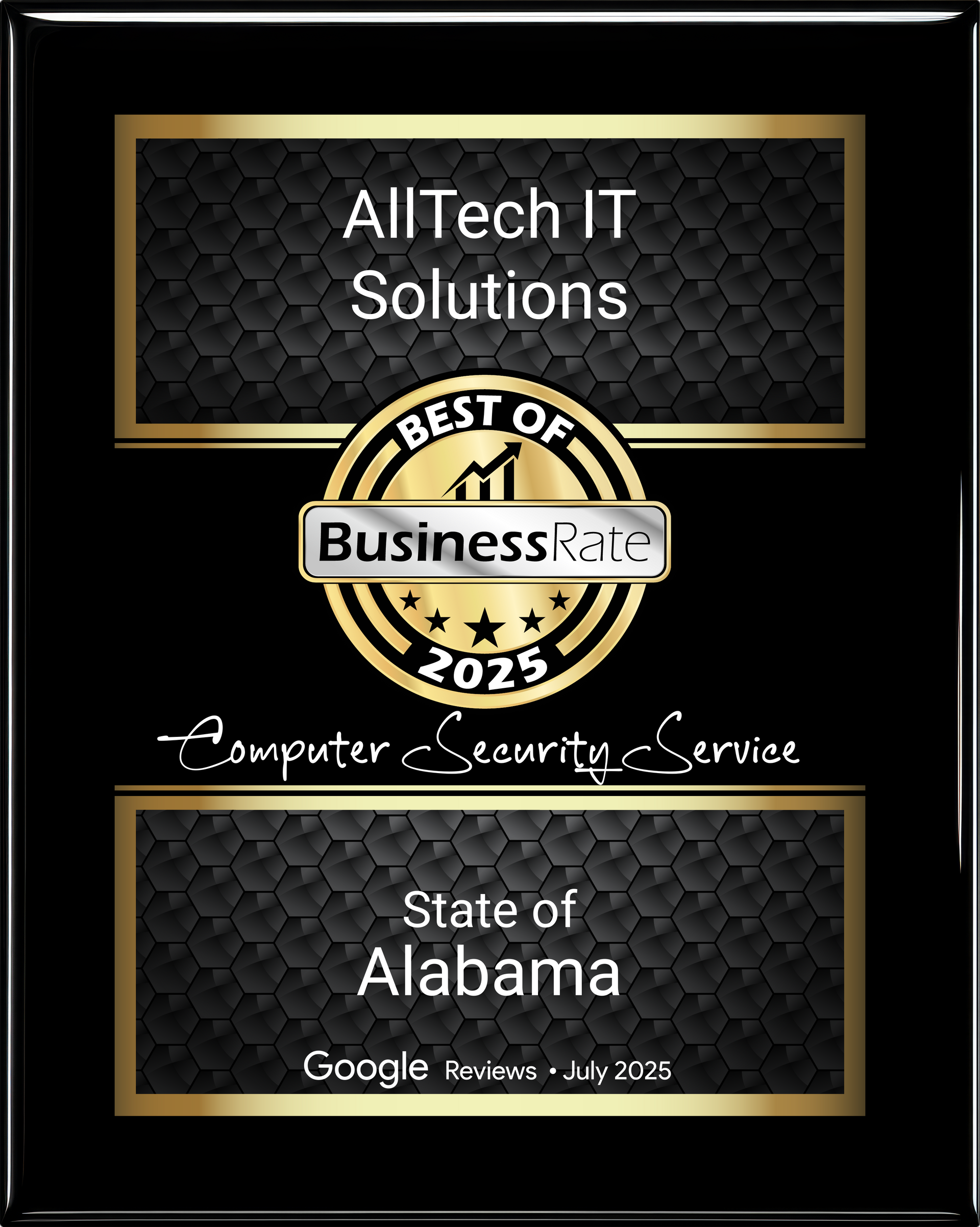Does Your Growing Business Need a Managed Service Provider (MSP)?
Does Your Growing Business Need a Managed Service Provider (MSP)? 5 Clear Signs You're Ready
Are you running a small or medium-sized business (SMB) and wondering if a Managed Service Provider (MSP) is right for you? While the term "MSP" is common, its true value for SMBs often remains unclear. This guide cuts through the jargon to show you exactly when and why strategic IT support can be a game-changer for your business.
A Managed Service Provider (MSP) is a third-party company that remotely manages your IT infrastructure and end-user systems. Unlike traditional "break-fix" IT, modern MSPs operate as strategic partners, proactively aligning your technology investments directly with your business objectives. This shift helps businesses grow, enhance security, and improve efficiency without the burden of managing complex IT in-house.
Recent industry research highlights that MSPs are evolving from reactive support to proactive strategic planning, frequently offering services such as virtual Chief Information Officer (vCIO) and virtual Chief Information Security Officer (vCISO) roles. (Analysys Mason; Infrascale) This evolution means SMBs can now access enterprise-level IT expertise and strategic guidance without needing enterprise-level budgets.
The bottom line: If your business is growing rapidly, facing digital transformation pressures, or struggling to connect technology decisions to actual business outcomes, you likely need a Managed Service Provider (MSP)—even if you haven't realized it yet.
The 5 Clear Signs Your Business Needs an MSP (Even If You Think You Don't)
Many SMBs operate under the assumption that their current IT setup is "good enough," until critical issues arise. Recognizing these five indicators can help you make a proactive, strategic decision for your company's future.
Sign #1: Your Technology Decisions Don't Connect to Business Goals
How do you know if your technology is actually helping your business grow?
A common scenario for growing businesses involves making technology purchases based on immediate needs: a new laptop after an old one crashes, a software subscription because a team requested it, or a security tool purchased after news of a data breach. But can you directly connect these technology investments to measurable business outcomes like increased revenue, improved operational efficiency, or enhanced competitive advantage?
If your answer is "not really," your business is likely experiencing the "gap between business goals and technology infrastructure." This disconnect is the most frequently cited challenge for SMBs across major industry analyses of MSP-SMB relationships. (Technology Marketing Toolkit; ZINFI)
What this means: Strategic MSPs bridge this critical gap by:
- Conducting thorough technology assessments specifically aligned with your 3-5 year business plan.
- Recommending technology investments based on measurable Return on Investment (ROI), rather than vendor preferences or short-term fixes.
- Creating a robust technology roadmap that can scale seamlessly with your growth trajectory.
- Translating complex technical jargon into clear, actionable business impact metrics that leadership can understand.
As Attentus Technologies explains, modern MSPs function as "strategic partners that align technology investments with business objectives for SMBs," moving beyond mere IT issue resolution.
Sign #2: You're Reactive Instead of Proactive With IT Management
When was the last time you planned your technology strategy, versus just responding to problems?
Many small and medium businesses operate within a "traditional break-fix model"—technology is addressed only when it fails. While seemingly cost-effective in the short term, this reactive approach generates significant hidden costs:
- Lost productivity: Employees cannot work during system downtime.
- Emergency service fees: Unplanned repairs often incur higher rates than scheduled maintenance.
- Security vulnerabilities: Undetected and unaddressed until an exploit occurs.
- Missed opportunities: Technology limitations prevent the adoption of new, beneficial initiatives.
Eight out of ten authoritative sources on MSP partnerships emphasize a crucial shift towards "consultative partnership" models, where ongoing strategic advisory replaces emergency firefighting. (Samsung Knox; Coro Cybersecurity)
What changes with an MSP partnership: A modern MSP model fundamentally shifts your IT operations towards proactive management:
- Proactive monitoring: Issues are detected and often resolved before they impact business operations, minimizing downtime.
- Planned maintenance: Software updates, patches, and system checks are scheduled during off-peak hours to avoid disruption.
- Risk mitigation: Continuous security assessments and rapid threat response protect your business assets.
- Strategic planning: Quarterly business reviews ensure technology continuously supports evolving business needs.
Palmetto Technology Group notes that this transformation moves technology "from a cost center to a competitive advantage" for SMBs, enabling them to compete more effectively with larger enterprises.
Sign #3: You're Trying to Compete Digitally But Lack In-House Expertise
Can your current team implement the digital tools your competitors are using?
Digital transformation is not merely a buzzword; it's a critical factor for business survival and growth, mentioned in seven out of ten recent MSP industry analyses. SMBs face the challenge of needing to modernize to remain competitive, yet often lack the specialized in-house expertise to evaluate, implement, and manage sophisticated digital tools. (ANC Group; Cloudtango)
Consider these common digital transformation needs that require specialized skills:
- Cloud migration and hybrid infrastructure management: Moving and managing data and applications in cloud environments.
- Advanced cybersecurity: Beyond basic antivirus, including threat intelligence and incident response.
- Data analytics and business intelligence: Leveraging data to make informed strategic decisions.
- Collaboration tools: Implementing and managing platforms for remote and hybrid workforces.
- CRM integration: Connecting customer relationship management systems with other business tools.
- Compliance: Adhering to industry-specific regulations (e.g., HIPAA, GDPR, PCI-DSS).
The MSP advantage: Rather than hiring full-time specialists for each domain, which is prohibitively expensive for most SMBs, MSPs provide "cost-effective access to enterprise-level IT expertise" across all these critical areas. Industry research confirms this is a global trend, with SMBs worldwide increasingly seeking "strategic MSP partnerships amid digital transformation needs." (Analysys Mason)
Sign #4: Your Technology Can't Scale With Your Growth Plans
If your business doubled in size next year, would your technology infrastructure support it?
Many successful small businesses encounter unexpected technology barriers as they grow. What happens when you expand from 10 employees to 25, open new locations, or broaden your service area? Suddenly, you might find that:
- Your existing network struggles with increased load and user demand.
- Software licenses don't accommodate new users without significant cost or re-negotiation.
- Your security model wasn't designed for distributed or multi-location operations.
- Backup systems prove inadequate for expanded data volumes.
- Your IT support model breaks down due to geographic distribution.
"Scalability and growth" emerge as a core theme in nine out of ten industry sources, making it the second most critical factor driving MSP-SMB partnerships. The consensus is clear: technology solutions must "grow parallel with business expansion." (ZINFI; Technology Marketing Toolkit)
How MSPs enable scalable growth:
- Infrastructure designed for expansion: Utilizing cloud-based solutions that allow you to add capacity on-demand.
- Flexible service models: Paying only for what you need now, with the ability to easily scale services up or down.
- Multi-location expertise: Providing proven frameworks and solutions for distributed operations.
- Growth planning: Developing technology roadmaps that anticipate your business's 12-36 month trajectory.
Cloudtango emphasizes that strategic MSPs "future-proof technology infrastructure" by building flexibility and scalability into initial designs, preventing costly and disruptive afterthoughts.
Sign #5: You're Concerned About Cybersecurity But Don't Know Where to Start
Do you know if you're protected against the most common cyber threats targeting businesses your size?
Here's an uncomfortable, but critical, truth: Cybercriminals specifically target small and medium businesses. They understand that SMBs possess valuable data but often lack the enterprise-level security defenses of larger corporations. This places SMBs in a dangerous middle ground—too large to ignore security, yet often perceiving themselves as too small to afford comprehensive protection.
Modern MSPs directly address this vulnerability through services like virtual Chief Information Security Officer (vCISO) roles, delivering "enterprise-level security expertise" without the typical six-figure salary of a full-time security executive. (Coro Cybersecurity; Samsung Knox)
Comprehensive security services from an MSP typically include:
- 24/7 security monitoring and threat detection: Continuous vigilance against cyber threats.
- Regular vulnerability assessments and penetration testing: Identifying weaknesses before attackers can exploit them.
- Employee security awareness training: Building a "human firewall" to prevent common social engineering attacks.
- Incident response planning and execution: A clear strategy for minimizing damage during a breach.
- Compliance management: Ensuring adherence to industry regulations and data privacy laws.
- Data backup and disaster recovery planning: Protecting your critical data and ensuring business continuity.
The value proposition of "risk mitigation through proactive management" consistently appears across authoritative sources as a primary reason SMBs partner with MSPs. (Infrascale; Attentus Technologies)
What Makes Modern MSPs Different From Traditional IT Support?
Understanding the fundamental differences between traditional IT support and a modern MSP partnership is crucial for making an informed decision about your business's IT future.
The Evolution: From Break-Fix to Strategic Partnership
The landscape of IT support for SMBs has dramatically changed.
Break-fix IT refers to a reactive model of technical support where services are rendered only when a system or component fails. This approach focuses solely on immediate problem resolution rather than prevention or strategic planning.
| Feature | Traditional Break-Fix IT Support Model | Modern MSP Partnership Model |
|---|---|---|
| Approach | Reactive: You call when something breaks; focus on fixing immediate issues. | Proactive: Ongoing monitoring and prevention aim to prevent problems before they occur. |
| Focus | Tactical: Fix specific technical problems as they arise. | Strategic: Align technology with overarching business objectives and growth. |
| Billing Model | Hourly rates: Unpredictable costs, often higher for emergency services. | Predictable pricing: Monthly fixed fees for defined services, enabling better budgeting. |
| Perspective | Technical: Solutions are based on technology needs and capabilities. | Business: Solutions are based on ROI and desired business outcomes. |
| Relationship | Transactional: Project-based or one-off engagements. | Partnership: Ongoing advisory role, with a vested interest in your long-term success. |
Industry consensus identifies "business outcome focus vs. technical support focus" as the key differentiator between traditional and modern IT service delivery models. (Technology Marketing Toolkit; ZINFI)
The vCIO Advantage: Strategic Guidance Without the Executive Salary
One of the most valuable services offered by modern MSPs is the virtual Chief Information Officer (vCIO). This role provides C-level strategic technology guidance to your business without requiring the expense of a full-time executive hire.
A Virtual Chief Information Officer (vCIO) is an outsourced expert who provides strategic IT leadership, aligning technology initiatives with business goals. They offer the benefits of a full-time CIO—strategic planning, budget management, and technology roadmap development—on a fractional or retainer basis.
What a vCIO actually does for your business:
- Participates in your business planning sessions to deeply understand your objectives.
- Translates complex business goals into clear, actionable technology requirements.
- Creates multi-year technology roadmaps, complete with budget forecasts and project timelines.
- Evaluates vendors and technology solutions based on your specific needs, not just generic offerings.
- Provides board-level reporting on technology investments, performance, and ROI.
- Guides your digital transformation initiatives, ensuring they meet strategic targets.
Research from ANC Group indicates that SMBs with access to vCIO-level guidance report "enhanced operational efficiency and competitiveness" compared to those relying solely on tactical IT support.
Real Business Outcomes: How MSPs Transform Technology ROI
The most profound impact of MSP partnerships is the repositioning of technology from a reluctant expense to a strategic investment that generates measurable returns.
From Cost Center to Competitive Advantage: The Value Proposition
MSPs help businesses shift their perception of IT. Instead of a necessary evil, IT becomes a powerful enabler of growth and a source of competitive edge.
Five core business value propositions consistently highlighted across industry research (Analysys Mason; Infrascale; Samsung Knox) include:
- Cost-Effective Access to Enterprise-Level IT Expertise:
- Gain access to specialists in cybersecurity, cloud computing, networking, and regulatory compliance.
- Pay fractional costs for the equivalent of full-time, highly skilled IT expertise.
- Eliminate the significant costs and challenges associated with recruiting, training, and retaining in-house IT staff.
- Alignment of Technology Investments with Business ROI:
- Ensure every technology decision directly supports your business outcomes.
- Regular reviews confirm IT spending remains aligned with current business priorities.
- Eliminate waste from unused software licenses, redundant tools, or outdated infrastructure.
- Risk Mitigation Through Proactive Management:
- Reduce potential downtime from hours to minutes through continuous monitoring and rapid response.
- Prevent costly security breaches via continuous threat assessment and robust defensive strategies.
- Maintain regulatory compliance through automated reporting and meticulous documentation.
- Enhanced Operational Efficiency and Competitiveness:
- Empower employees to focus on core business activities, not IT troubleshooting.
- Implement modern tools and optimized systems that drive productivity improvements.
- Match or even exceed the technology capabilities of larger competitors.
- Future-Proofing Technology Infrastructure:
- Benefit from regular assessments that keep your business current with industry best practices and technological advancements.
- Implement scalable architecture designed to support significant growth without requiring a complete rebuild.
- Engage in strategic planning that prevents reactive, expensive emergency upgrades.
Palmetto Technology Group quantifies this impact, reporting that SMBs with strategic MSP partnerships achieve technology satisfaction scores 40% higher than those relying on traditional break-fix support models.
The MSP Partnership Model: What to Expect
Transparency is key to a successful partnership. Understanding how strategic MSPs engage with SMBs helps demystify the process and build trust.
How Strategic MSPs Actually Work With SMBs
A successful MSP partnership typically unfolds through distinct phases:
- Phase 1: Discovery and Assessment (Approx. 30-60 days)
- A comprehensive audit of your current technology infrastructure and systems.
- In-depth interviews with leadership to understand business objectives, challenges, and aspirations.
- A detailed gap analysis identifying discrepancies between your current IT state and your business needs.
- A thorough risk assessment covering security, compliance, and operational vulnerabilities.
- Presentation of a customized service proposal with transparent pricing and Service Level Agreements (SLAs).
- Phase 2: Transition and Stabilization (Approx. 60-90 days)
- Onboarding of your systems onto the MSP's monitoring and management platforms.
- Meticulous documentation of all IT infrastructure, configurations, and processes.
- Immediate remediation of critical security vulnerabilities identified during assessment.
- Training for your team on new processes, communication channels, and support procedures.
- Implementation of "quick wins" designed to demonstrate immediate value and build confidence.
- Phase 3: Optimization and Strategy (Ongoing)
- Regular quarterly business reviews (QBRs) led by your vCIO to assess progress and adjust strategy.
- Continuous, proactive monitoring and maintenance (often 24/7) to ensure optimal performance.
- Ongoing strategic planning sessions to align technology with evolving business priorities.
- Continuous improvement initiatives for IT processes and systems.
- Annual updates to your technology roadmap to reflect long-term business goals.
- Phase 4: Growth Partnership (Long-term)
- Technology infrastructure scales seamlessly with your business expansion.
- Advisory input on major business decisions that have technology implications.
- Innovation consulting, exploring emerging technologies relevant to your industry.
- Support for merger/acquisition technology due diligence and integration.
Attentus Technologies emphasizes that successful MSP partnerships are characterized by "ongoing strategic advisory" relationships, where the MSP acts as an extension of your team, not merely an outsourced IT department.
Common Questions Small Business Owners Ask About MSPs
These FAQs address the most common concerns and objections SMBs have when considering an MSP.
"Isn't an MSP just too expensive for a business my size?"
Direct Answer: Most small businesses find MSP partnerships are more cost-effective than their current approach when considering the total cost of ownership, including hidden expenses. While costs vary significantly based on services and business size, SMBs can expect to pay anywhere from $75 to $250 per user per month, or a flat fee between $500 to $5,000+ per month for comprehensive services.
Consider the true, often hidden, costs of your current IT situation:
- Emergency support calls at premium hourly rates (e.g., $150-$300/hour).
- Lost employee productivity during system downtime, impacting revenue.
- Financial and reputational damage from security breaches or data loss.
- Employees spending valuable time on IT tasks instead of their core responsibilities.
- Suboptimal technology purchases that fail to integrate or deliver expected value.
- Opportunity costs from lacking advanced IT capabilities that competitors utilize.
Industry research consistently shows MSPs provide "cost-effective access to enterprise-level IT expertise" typically at 40-60% of the cost of hiring equivalent in-house staff, effectively turning an unpredictable expense into a predictable, manageable investment. (Infrascale; ZINFI)
"We have an IT person—do we still need an MSP?"
Direct Answer: Many highly successful MSP partnerships complement existing in-house IT staff, providing specialized support and strategic guidance that elevates their role rather than replacing it.
An MSP partnership enhances your existing IT person's capabilities by:
- Providing reliable backup and support when your IT person is unavailable, on vacation, or overwhelmed.
- Offering specialized expertise in complex domains like advanced cybersecurity, cloud architecture, or compliance, which a single IT generalist may lack.
- Delivering strategic vCIO guidance, freeing your IT person to focus on operational execution and internal projects.
- Handling routine monitoring, maintenance, and helpdesk support, allowing your IT person to concentrate on strategic initiatives specific to your business.
Think of an MSP as an extension of your IT team, offering a deeper bench of expertise and support.
"How do I know an MSP will understand my specific industry?"
Direct Answer: To ensure an MSP understands your industry, prioritize providers who demonstrate relevant experience, hold industry-specific certifications, and engage in a thorough discovery process.
A strong MSP with industry expertise will typically:
- Demonstrate a proven track record with businesses similar to yours in size and industry.
- Hold relevant compliance certifications (e.g., HIPAA for healthcare, PCI-DSS for retail, FINRA for finance).
- Ask detailed questions about your specific business processes, regulatory requirements, and unique operational challenges.
- Provide references from similar businesses that can attest to their industry understanding.
- Show a clear understanding of industry-specific technology requirements and trends.
The consensus across industry sources confirms that "strategic alignment" between an MSP and your business often requires industry-specific knowledge, making this a valid and important selection criterion during your evaluation. (Technology Marketing Toolkit; Coro Cybersecurity)
"Is getting an MSP worth the investment for a small business?"
Direct Answer: Yes, for growing small businesses struggling with reactive IT, security, or scalability, an MSP is typically a worthwhile investment, providing predictable costs, enhanced security, and strategic growth enablement.
"How long does it take to onboard with a new MSP?"
Direct Answer: The onboarding process for a new MSP typically takes between 1 to 3 months, depending on the complexity of your existing IT infrastructure and the scope of services required.
"Can an MSP help with our remote work setup?"
Direct Answer: Absolutely. Modern MSPs specialize in designing, implementing, and managing secure and efficient remote and hybrid work environments, including cloud collaboration tools, secure access, and device management.
"What if we need support outside of business hours?"
Direct Answer: Reputable MSPs offer 24/7/365 monitoring and support services, ensuring your systems are protected and issues are addressed promptly, regardless of time zones or traditional business hours.
"What are the risks of not partnering with an MSP?"
Direct Answer: Not partnering with an MSP can lead to increased cybersecurity risks, unexpected IT costs, significant downtime from unaddressed issues, slower business growth due to technology limitations, and a competitive disadvantage.
Comparison Blocks
This comparison highlights the key differences between a traditional, reactive IT approach and a modern, proactive Managed Service Provider (MSP) partnership.
Traditional Break-Fix IT vs. Modern Managed Service Provider (MSP)
| Feature | Traditional Break-Fix IT | Modern Managed Service Provider (MSP) |
|---|---|---|
| Philosophy | Fix problems after they occur. | Prevent problems before they occur; strategic foresight. |
| Cost Structure | Unpredictable hourly rates for emergencies. | Predictable monthly fees; bundled services. |
| Focus | Tactical problem resolution; immediate repairs. | Strategic business alignment; long-term growth and efficiency. |
| Expertise | Generalist IT staff; limited specialized knowledge. | Access to a team of specialists (security, cloud, network). |
| Downtime | Frequent and often lengthy, impacting productivity. | Minimized through proactive monitoring and rapid response. |
| Security | Reactive to threats; often basic protection. | Proactive threat intelligence, monitoring, and compliance. |
| Scalability | Difficult to scale; often requires complete overhaul. | Built for scalability; flexible to support business growth. |
| Relationship | Vendor-client (transactional). | Strategic partner (collaborative, advisory). |
| Budgeting | Challenging to forecast IT expenses. | Easy to budget with predictable monthly costs. |
Who should pick which:
- Pick Traditional Break-Fix IT if: Your business is extremely small (1-2 people), technology use is minimal, IT issues are rare and non-critical, and you prefer to manage costs on an ad-hoc basis, accepting the risks of unpredictable downtime and security vulnerabilities.
- Pick a Modern MSP if: Your business is growing, relies heavily on technology, needs predictable IT costs, values proactive security, requires specialized IT expertise, and wants technology to be a strategic enabler of business goals.
External Authoritative Citations:
- Analysys Mason (referring to MSP market analysis)
- Infrascale (referring to MSP service evolution)
- Technology Marketing Toolkit (referring to MSP industry trends)
- Coro Cybersecurity (referring to vCISO services)
- Samsung Knox (referring to enterprise security for SMB)
- ZINFI (referring to partner relationship management)
- Cloudtango (referring to future-proofing technology)











